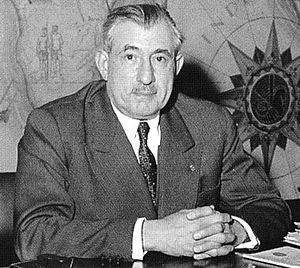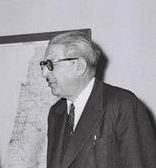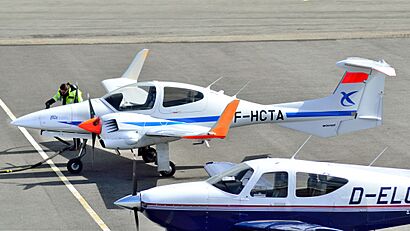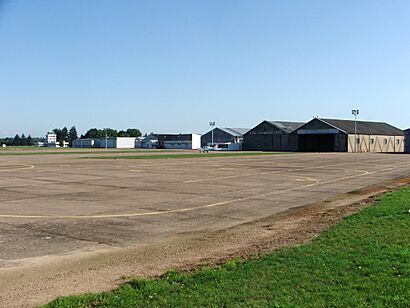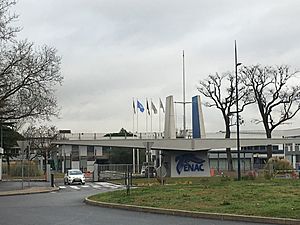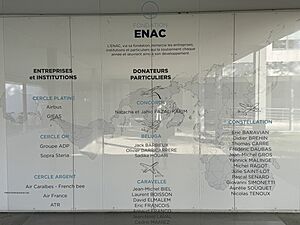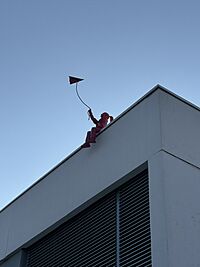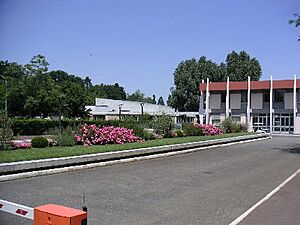École nationale de l'aviation civile facts for kids
 |
|
|
Other name
|
ENAC |
|---|---|
| Motto | La référence aéronautique |
|
Motto in English
|
The aeronautical standard |
| Type | Grande école |
| Established | 1949 |
|
Academic affiliations
|
3AF, Aerospace Valley, CDEFI, CESAER, CGE, CTI, Elles Bougent, Erasmus, EUR-ACE, France AEROTECH, GEA, IAAPS, ICAO, ISSAT, PEGASUS, Toulouse Tech, University of Toulouse |
| General Director | Olivier Chansou |
|
Administrative staff
|
910 |
| Students | 3,000 (in 2017) |
| 80 | |
| Location |
Biscarrosse, Carcassonne, Castelnaudary, Château-Arnoux-Saint-Auban, Grenoble, Melun, Montpellier, Muret, Saint-Yan and Toulouse
,
France
|
| Campus | Biscarrosse - Parentis Airport, Carcassonne Airport, Castelnaudary - Villeneuve Airport, Château-Arnoux-Saint-Auban Airport, Grenoble-Isère Airport, Melun Villaroche Aerodrome, Montpellier – Méditerranée Airport, Muret - Lherm Aerodrome, Saint-Yan Airport and Toulouse |
| Colours | Blue and grey |
The National School of Civil Aviation, known as ENAC (from its French name, École nationale de l'aviation civile), is a famous school in France. It's one of the top places where students can earn degrees in engineering, especially for jobs in aviation. ENAC is considered a "grande école," which means it's a very important and selective school in France.
ENAC was started on August 28, 1949. Its main goal was to train people for jobs in civil aviation, like pilots and air traffic controllers. The school is a public institution and works closely with the Ministry of Ecological Transition. It is also connected to the University of Toulouse and Aerospace Valley. ENAC was one of the five schools that helped create France AEROTECH, a group focused on aerospace education.
ENAC offers many different programs, about 30 in total. These programs teach students about civil aviation and aeronautics. You can study things like aerospace engineering, aircraft maintenance, how to become a commercial airline pilot, air traffic control, and even how to be a flight instructor. The school also has special Master of Science and Advanced Master programs for students who already have some experience.
Contents
History of ENAC
How ENAC Started
After World War II ended in 1945, air travel in France grew very quickly. Because of this fast growth, there was a big need for skilled people to work in aviation. It was important to make sure everyone working in the industry followed the same rules and communicated well. ENAC was created to help with this. One of the people who helped start it was Max Hymans, who was a top leader in civil aviation at the time.
Before ENAC, many different training centers existed. For example, airfield managers learned in Orly, and navigation staff trained in Le Bourget. Wireless operators and technicians also trained in Orly. Engineers and designers learned at other special schools. ENAC's main job was to bring all this training together and make it more organized.
In 1948, new rules were made for civil aviation workers in France. This led to the creation of new jobs, like air traffic engineers and air traffic controllers. The International Civil Aviation Organization also set new rules for pilot licenses, including how many flight hours pilots needed.
Before it was called ENAC, the school was known as a "service of education and internships." It was funded by the civil aviation department.
A School for Aviation Safety
ENAC officially began on August 28, 1949, in Paris. It was started by Max Hymans and Jules Moch. Their goal was to train all kinds of civil aviation professionals, from pilots to technicians and government workers. The school was first located in Orly, south of Paris.
Many people saw ENAC as a "university of aviation safety." This is because a big reason for bringing all the training together in one school was to make air travel safer. The idea was that if pilots and ground staff trained together, they would understand each other better. This teamwork is very important for air transport.
Early Partnerships
In 1959, ENAC made an important partnership that allowed it to train pilots who had no flight experience before joining the school. Before this, students would get their basic flight training at the Service d'exploitation de la formation aéronautique (SEFA) center in Saint-Yan Airport. ENAC would then provide the advanced training.
ENAC also worked with the National School of Meteorology. This was important because weather plays a big role in air traffic control. The school also had strong ties with the Air Force. Many military pilots and technicians joined civil aviation after World War II, and ENAC helped them switch to civilian jobs.
Between 1949 and 1959, the number of courses at ENAC grew from six to 64, and the number of students increased from 49 to 800. The school also started accepting its first students from other countries in the early 1960s. New courses were added to keep up with new aviation needs, like training for flight instructors.
Moving to Toulouse
The school went through big changes between 1960 and 1975. In 1968, ENAC moved its main campus to Toulouse, where it is still located today. In 1970, the school's status changed from being a department of the government to a public institution.
ENAC was first located near Paris-Orly Airport, which was France's biggest airport. This location was good because it was easy for students to access planes and for aviation leaders to visit. However, as traffic at Orly grew, it became harder for ENAC to operate there.
In the mid-1950s, people started thinking about moving ENAC. Many places near Paris were considered, but eventually, Toulouse became the top choice. Toulouse was a good fit because it already had a strong aviation industry and was known as a university city. The University of Toulouse was founded way back in 1229! Other important aviation schools also moved to Toulouse around that time.
The move to Toulouse was approved in 1961. Construction on the new campus began in 1966 and was finished in 1968. The first school year in Toulouse started on September 16, 1968, with about 500 students.
A Public Institution
For a while, ENAC's legal status was a bit unclear. It was closely watched by the government, and some reports even questioned its existence. These problems were partly because ENAC needed to train both government officials and other students, and it had a mix of teachers.
To solve these issues, ENAC became a "public administrative institution" on January 1, 1971. This new status gave the school more freedom and helped it manage its budget better. ENAC then set up a board of directors to help run the school.
New Goals and Programs
After 1975, ENAC started to train more students who were not civil servants. It became very important for training people for jobs in the civilian aerospace industry. While civilian students had been admitted since 1956, this became a bigger focus. ENAC's engineering programs, especially in electronics and information technology, made it a leading engineering school.
In 1984, ENAC also started focusing on research. This meant that engineers trained at ENAC would not only learn existing knowledge but also how to discover new things. The school began to explore areas like electronics, automation, computers, and aviation economics.
The school also started offering special Master programs in the mid-1980s. These programs helped train foreign managers and French professionals quickly. Continuing education courses also grew, covering topics like air-traffic control, electronics, and languages.
Growing Internationally
ENAC became much more international in the 1990s. It joined European projects and offered student exchange programs like Erasmus. The school welcomed more and more foreign students and built strong connections with universities in Germany and Finland.
ENAC also teamed up with other French aviation schools, ISAE and ENSMA, to form the Groupement des écoles d'aéronautique (GEA France). This group, along with French companies like Airbus and Thales, helped create the Chinese-European Aviation Engineering Institute in Tianjin in 2007. This institute offers Master programs for Chinese students.
In the 2000s, ENAC developed more courses taught in English and focused on air navigation. In 2010, it became an ICAO center for training in aviation security. On January 1, 2011, ENAC merged with SEFA, becoming Europe's largest aviation university.
Directors of ENAC
The current director of ENAC is Olivier Chansou. He became the school's eighth director on November 27, 2017.
| Name | Term | Occupation |
|---|---|---|
| Guy du Merle (1908–1993) | 1948–1951 | Aerospace engineer, test pilot, writer |
| Gilbert Manuel (1913–2010) | 1951–1967 | Telecommunications engineer |
| Louis Pailhas (born 1926) | 1967–1982 | Aerospace engineer |
| André Sarreméjean | 1982–1990 | Aerospace engineer |
| Alain Soucheleau | 1990–1999 | Aerospace engineer |
| Gérard Rozenknop (born 1950) | 1999–2008 | Aerospace engineer |
| Marc Houalla (born 1961) | 2008–2017 | Aerospace engineer, manager |
| Olivier Chansou (born 1965) | 2017–present | Aerospace engineer |
How ENAC is Managed
ENAC is run by an elected president. This president oversees three main groups: one for training and research, one for flight training, and one for international relations and development.
ENAC's Budget
In 2011, ENAC had a budget of €126 million. This was a big increase from 2010, mainly because the school merged with SEFA. A large part of this budget, €102 million, came from a grant from the European Union.
The ENAC Foundation
The ENAC Foundation was created in September 2011. Its purpose is to help guide the school's training and research, especially in its engineering programs. It also helps build partnerships with companies in the aerospace industry. The foundation includes experts from companies like Air France, Airbus, and Thales.
ENAC Campuses
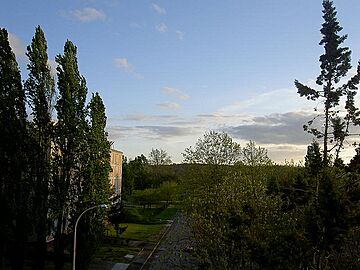
ENAC has 10 campuses across France. The main campus is in Rangueil, about 6 kilometers from Toulouse.
Other campuses include:
- A gliding center at Château-Arnoux-Saint-Auban Airport.
- A maintenance center for ENAC's planes at Castelnaudary – Villeneuve Airport.
- Carcassonne Airport for airline-pilot and aerobatics training.
- Alpes–Isère Airport for basic flight rules (VFR) and flight instructor training.
- Biscarrosse – Parentis Airport for VFR flights and air traffic controller training.
- Saint-Yan Airport for advanced flight rules (IFR) and multi-engine pilot training.
- Montpellier–Méditerranée Airport for airline-pilot and air-traffic controller training.
- Muret – Lherm Aerodrome for airline-pilot and air-traffic controller training.
- Melun Villaroche Aerodrome for training government aviation staff.
The main campus in Toulouse offers student housing. It also has a cafeteria, a library, computer rooms, a fitness room, a rugby field, five tennis courts, beach volleyball, and a driving range.
Aircraft and Simulators
ENAC has a large fleet of about 130 aircraft. These include:
- Mudry CAP 10 planes for aerobatics (fancy flying).
- Socata TB-10s and TB-20s, Diamond DA 40s, Diamond DA 42s, and Beechcraft Baron 58s for basic and instrument flight training.
- Beechcraft Super King Airs and ATR 42s for checking and adjusting equipment.
The Toulouse campus also has many flight simulators. These include fixed and full flight simulators for planes like the Robin DR400, Socata TB-20, Airbus A320, and Airbus A340. The air navigation department has control tower simulators that can show a 120 or 360-degree view. They also have simulators for ground-controlled approach and area control centers.
What Students Learn and Research
Study Programs
Each program at ENAC has its own way of choosing students, usually through special exams. ENAC offers four bachelor's degree programs to train airline pilots and civil-aviation technicians.
For airline pilots, students get eight months of theory training in Toulouse. Then, they have 16 months of practical flight training at the Montpellier, Carcassonne, Saint-Yan, and Muret campuses. Since 1992, graduates from this pilot training have their own alumni group called AGEPAC.
ENAC also helps high school students from families with less money become airline pilots after they finish high school. Students can also train to get a commercial pilot licence or become an aeronautical operations technician. The school also offers a certification called TSA, which can lead to jobs as civil service aviation technicians.
The university has seven master's-degree programs. These programs prepare students for jobs in the aerospace industry and for the DGAC (the French civil aviation authority).
ENAC trains air traffic controllers and air traffic safety electronics personnel (IESSA) for the DGAC. The Ingénieur ENAC (IENAC) course trains aerospace engineers in three main areas:
- Electronics and aeronautical telecommunications.
- Computer systems and air traffic.
- Aeronautical engineering.
About 10% of these students become civil service engineers after they graduate. ENAC is also a special school for graduates from École Polytechnique, another top French engineering school.
Since 2002, the training for DGAC managers has changed. Some officials are trained at École des ponts ParisTech, with about 300 hours of courses organized with ENAC.
ENAC has also created several master's-degree programs for international students. These include programs in International Air Transport Operation Management (started in 2007), satellite navigation (started in 2011), and air traffic management (started in 2012, with Massachusetts Institute of Technology). There's also a program in human–computer interaction with Paul Sabatier University.
ENAC offers special advanced master's programs called Mastère spécialisé. These cover topics like airport management, air-transport management, aviation safety, and aerospace project management.
All graduates from ENAC's engineering and master's programs are part of the ENAC Alumni association. This group was founded in 1987 and now represents all alumni of the university.
Ongoing Training
ENAC is Europe's largest organization for ongoing aeronautical training. It hosts over 7,500 students in more than 600 courses each year. These courses cover air traffic, electronics, computer science, aeronautical engineering, and aircraft control. They are for both French and foreign businesses, as well as government aviation staff.
International Connections
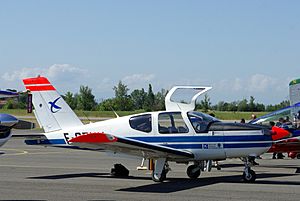
ENAC students can study at other top French aviation schools like ISAE and ENSMA. They can also exchange with other engineering schools as part of the France AEROTECH group.
Students can also study abroad through programs like Erasmus Programme and Pegasus. In 2011, 8% of students in the Ingénieur ENAC course were from other countries. In 2010, 46% of all students at ENAC were international.
ENAC has agreements with universities in the United States, like Embry–Riddle Aeronautical University and Florida Institute of Technology. It also trains staff for aviation safety agencies in Africa. ENAC helped start the Chinese-European Aviation Engineering Institute in Tianjin. The school also offers special master's programs at the Civil Aviation University of China for Chinese students. In 2011, ENAC signed an agreement to start an MBA program in aviation management in Casablanca.
Research at ENAC
ENAC does a lot of research, as required by French higher education laws. This research helps engineers learn how to discover new things. Originally, research focused on electronics, automation, computers, and aviation economics.
Since 2005, ENAC has had a team that works on UAVs (drones). They help develop Paparazzi, an open-source system for controlling drones automatically. The school also has a planetarium and an air-traffic control simulator for research. ENAC is a founding member of the European Academy for Aviation Safety.
In 2005, ENAC partnered with ONERA (a French aerospace research center) to work on air traffic management, aviation safety, satellite navigation, and sustainable development. By the end of 2011, ENAC had organized its research into six main programs. These include UAVs and air-traffic control, airports, aircraft operations, human-computer interaction, air-ground communications, and sustainable development. This research is done in four different laboratories.
Rankings
National ranking (for its Master of Sciences in Engineering)
| Name | Year | Rank |
|---|---|---|
| DAUR Rankings | 2022 | 27 ea |
Famous People
Alumni
Faculty
- Mélanie Astles, a French aerobatics champion, teaches at ENAC.
See also
 In Spanish: École nationale de l'aviation civile para niños
In Spanish: École nationale de l'aviation civile para niños


